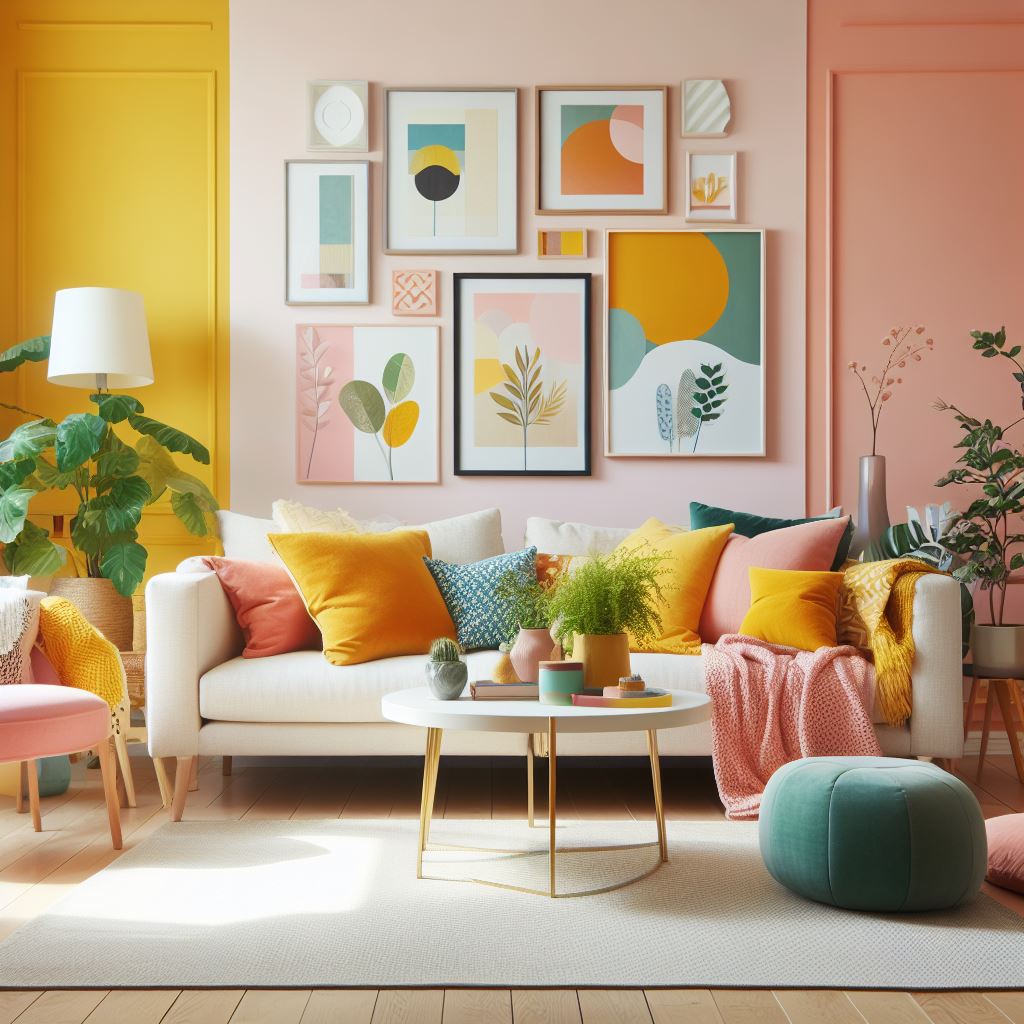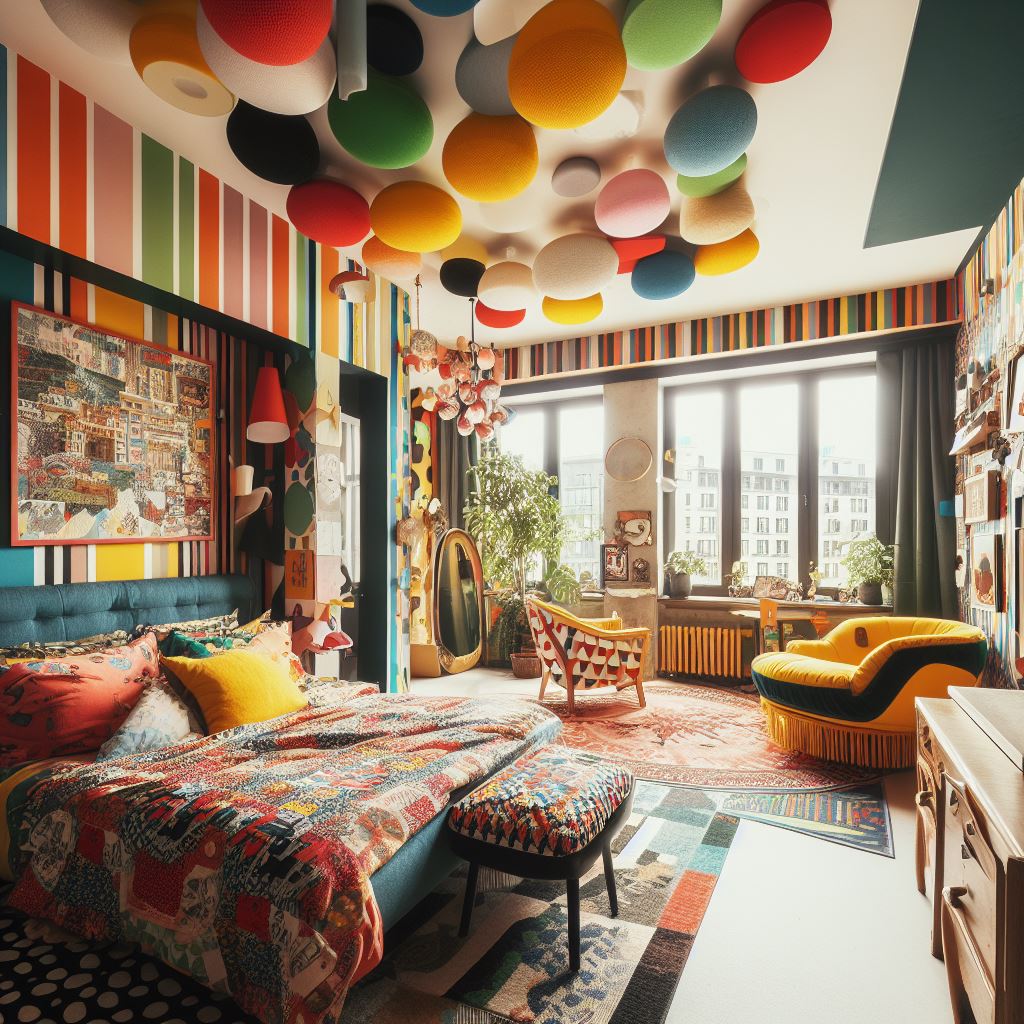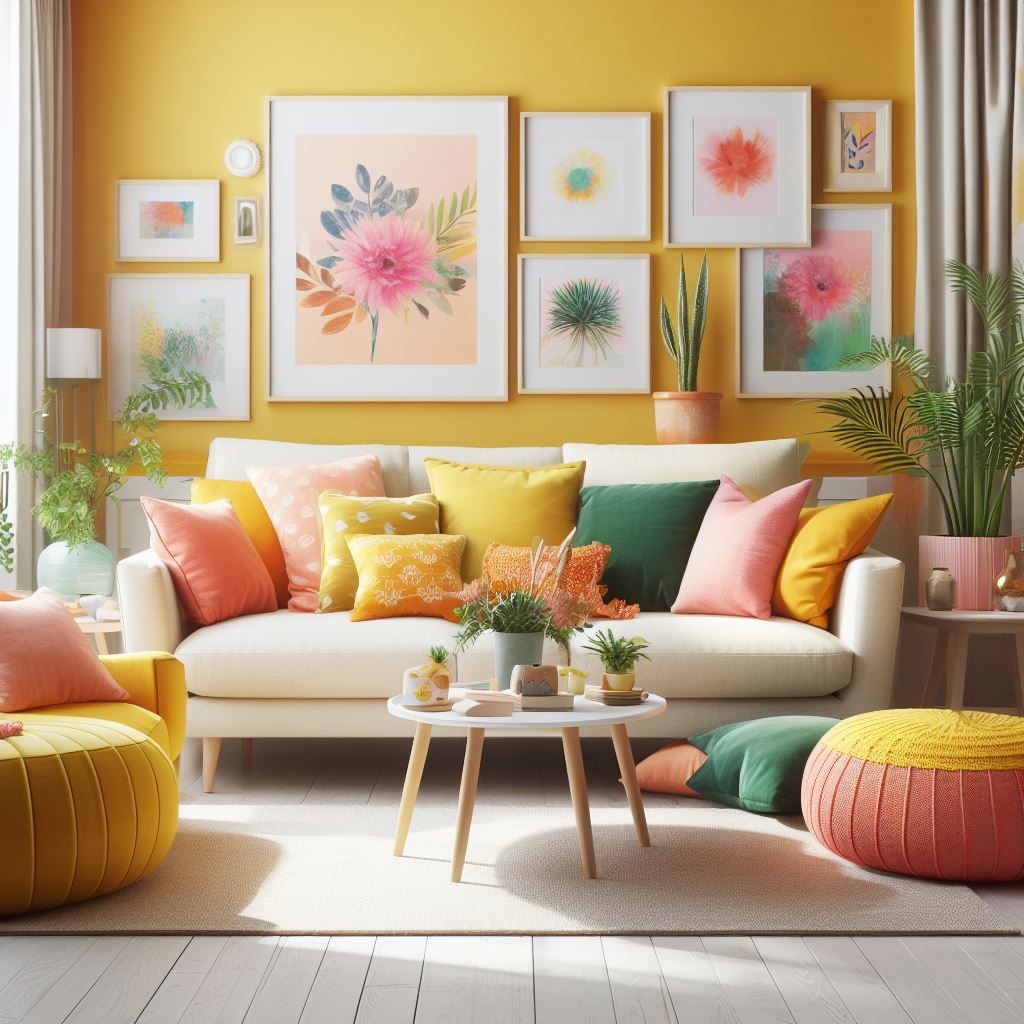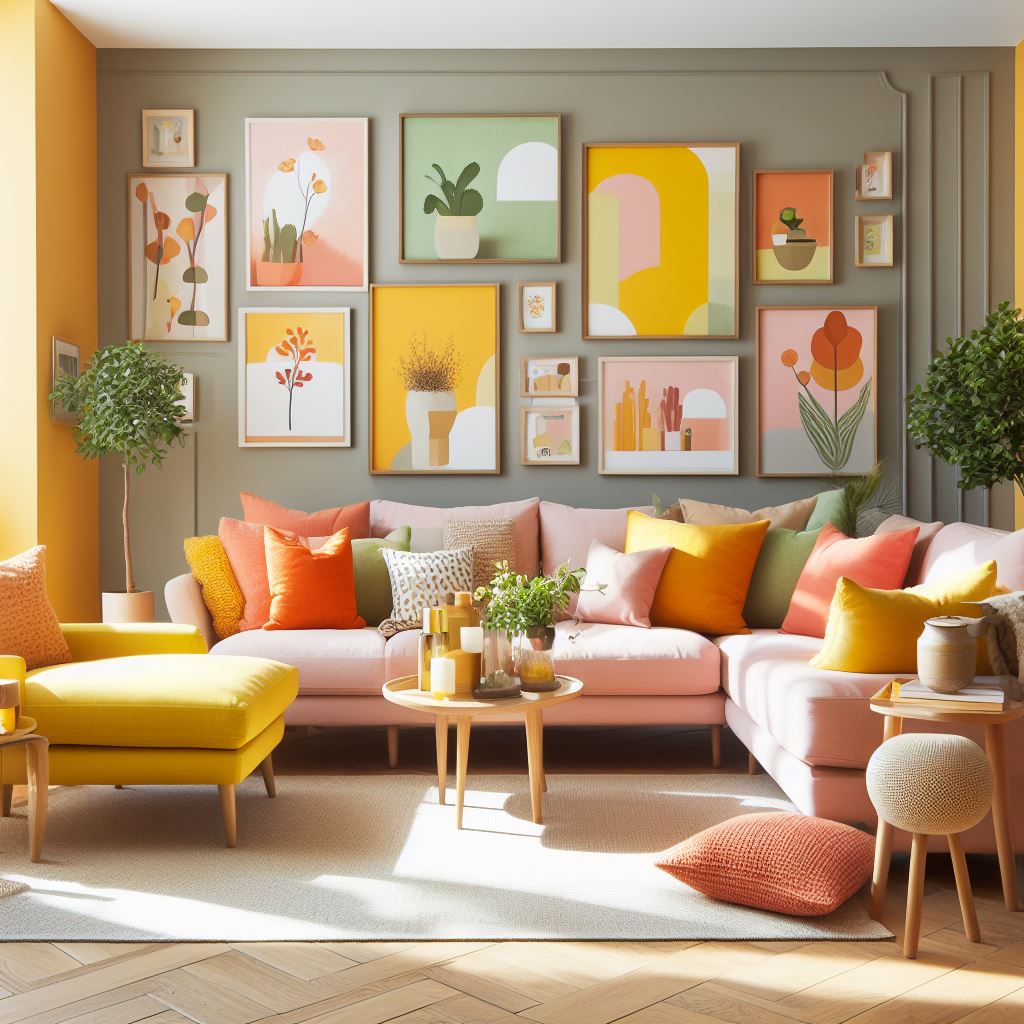Choosing the perfect paint color for each room in your home can be a daunting task, but with a little guidance, it can become an enjoyable and rewarding process. In this article, you will discover helpful tips and tricks to help you navigate the world of paint colors, allowing you to transform your living spaces into havens of style and comfort. Whether you’re looking to create a calming sanctuary in the bedroom or a vibrant and energetic space in the kitchen, this article will provide you with the knowledge and inspiration you need to choose the right paint color for every room in your home.
Consider the Mood and Function of the Room
When choosing a paint color for a room, it is important to first consider the purpose of the room. Are you looking for a relaxing bedroom, a productive home office, or a lively and inviting living room? The function of the room will influence the mood you want to create.
Next, think about the desired mood of the room. Do you want it to feel cozy and intimate, or bright and energizing? Different colors have different psychological effects on our mood, so it is important to choose a color that aligns with the feeling you want to evoke in the space.
Evaluate the natural lighting in the room. Natural light can significantly affect how a paint color looks in a room. A room with ample natural light may be able to handle darker or more vibrant colors, while a room with limited natural light may benefit from lighter shades to make the space feel brighter and more open.
Consider the size and layout of the room. Lighter colors generally make a space feel larger and more open, while darker colors can make a room feel cozy and intimate. If you have a small room, you may want to opt for lighter colors to make it appear more spacious.

Understand Color Psychology
Before selecting a paint color, it is important to understand the psychological effects that different colors can have on our mood and emotions. Colors such as blue and green are known for their calming and soothing effects, while yellows and oranges can create a sense of energy and warmth.
Consider the cultural associations of different colors. Different cultures may have different interpretations and associations with certain colors. For example, in Western cultures, white is often associated with purity and cleanliness, while in some Eastern cultures, it is associated with mourning.
Understanding color temperature is also crucial when choosing the right paint color. Warm colors like red, orange, and yellow create a cozy and inviting atmosphere, while cool colors like blue and green can create a sense of calm and tranquility.
Differentiate between warm and cool colors. Warm colors generally have undertones of red, orange, or yellow, while cool colors have undertones of blue, green, or purple. Consider the desired mood and function of the room when deciding whether to use warm or cool colors.
Determine the Color Scheme
Choose a color scheme that aligns with your preferences and desired mood for the room. Consider whether you prefer more neutral tones or bold, vibrant colors. Take into account your personal style and the overall aesthetic you want to create in the space.
Consider the existing decor in the room. Take into account the colors of the furniture, curtains, and other elements in the room. You want to choose a paint color that complements the existing decor and creates a cohesive look.
Evaluate the adjoining rooms. Consider how the color scheme of the room you are painting will flow with the colors of the adjacent rooms. You want to create a harmonious and visually appealing transition between spaces.
Keep the overall flow and coherence of the house in mind. Consider how the paint color of the room you are painting will fit into the overall color scheme of the house. Maintaining a consistent color palette throughout the house can create a sense of continuity and harmony.

Test the Paint Colors
Before committing to a paint color, it is important to test the colors in the actual space. Purchase sample paints in the colors you are considering and paint a small portion of the wall. This will give you a better idea of how the color will look in the room.
Observe the colors at different times of the day. Natural light and artificial light can significantly alter how a color appears in a room. Look at the painted area at different times of the day to see how the color changes in different lighting conditions.
Consider how the color interacts with the room’s lighting and furnishings. The paint color should complement the lighting fixtures in the room and enhance the overall ambiance. Additionally, consider how the color interacts with the room’s furnishings, such as curtains, rugs, and artwork.
Consider the Finish and Texture
When selecting a paint finish, it is important to differentiate between different types of finishes. Flat or matte finishes offer a smooth and velvety look, while satin and eggshell finishes have a slight sheen. Semi-gloss and high-gloss finishes provide a shiny and reflective surface.
Consider the practicality of the finish. High-gloss finishes are easier to clean and are more resistant to water and stains, making them a good choice for bathrooms and kitchens. However, they can also highlight imperfections on the walls. Matte finishes, on the other hand, are better at concealing imperfections but may not be as durable.
Evaluate the style and aesthetic of the room. The finish and texture of the paint should align with the overall style you want to achieve in the space. For example, a textured finish can add depth and interest to a more rustic or eclectic room.
Experiment with texture for added depth. Consider incorporating textured techniques such as sponging, ragging, or stenciling to add dimension to the walls. Texture can help create a unique and visually appealing look in the room.
Consult Paint Color Guides
Refer to color palettes and guides to get inspiration and ideas. Many paint manufacturers and home improvement stores offer color palettes and guides that can help you choose complementary colors and create a cohesive look.
Use online tools and visualizers to see how different colors will look in a room. Many paint manufacturers have online tools that allow you to upload a photo of your room and digitally test different paint colors to see how they will look.
Seek inspiration from design magazines and websites. Look for rooms with similar styles and color schemes to gather ideas and inspiration. Home design magazines and websites often showcase beautiful and well-designed spaces that can help you visualize how different colors will look in your own home.
Consider seeking professional advice from interior designers. Interior designers are trained to understand color psychology and can help you choose the right paint color for your room. They can provide expert guidance and suggest color combinations you may not have considered.
Take into Account the Ceiling and Trim
Choose a color for the ceiling that complements the walls and enhances the overall look of the room. Many people opt for a lighter shade of the wall color or a neutral white or off-white color for the ceiling, as it can make the room feel taller and more spacious.
Consider the trim and molding colors. The trim color should complement the wall color and create a visual transition between the walls and the ceiling. You can choose a color that matches the walls, a contrasting color, or a neutral color for the trim.
Evaluate the visual impact of contrasting or coordinated colors. Contrasting colors between the walls, ceiling, and trim can create a bold and dramatic look, while coordinated colors can create a more cohesive and harmonious atmosphere.
Ensure a smooth visual transition between walls, ceiling, and trim. Make sure the colors of the walls, ceiling, and trim come together seamlessly and create a visually pleasing and balanced look in the room.
Consider the Overall Color Scheme of the House
Maintain a consistent color palette throughout the house to create a cohesive look and flow between rooms. It is important to consider how the colors of the room you are painting will connect with the colors of the adjacent rooms.
Evaluate the connection between rooms. Pay attention to how the colors in one room will lead to the colors in another room. Consider using complementary or analogous color schemes to create a sense of harmony and continuity.
Consider the overall style of the house. The paint colors should align with the overall style and aesthetic of the house. If you have a more traditional style, you may opt for more classic and neutral colors, while a modern or eclectic style may allow for bolder and more unconventional color choices.
Create a cohesive and harmonious atmosphere throughout the house by choosing paint colors that work together and enhance the overall look and feel of the space.

Account for Personal Preference and Style
When choosing a paint color, it is important to consider your personal taste and preferences. Don’t be afraid to choose colors that resonate with you and reflect your personality.
Incorporate elements of your personal style into the room. Consider your favorite colors, patterns, and textures and find ways to incorporate them into the space. This will make the room feel more personalized and unique.
Choose colors that resonate with you and evoke the emotions and feelings you want to experience in the room. Whether you prefer soothing and calming colors or vibrant and energizing hues, make sure the paint color aligns with your preferences and reflects your personal style.
Experiment with unique and unconventional color choices. Don’t be afraid to step outside of your comfort zone and try something different. Sometimes, the most unexpected color combinations can create the most striking and beautiful results.
Seek Inspiration and Gather Ideas
Collect inspiration from various sources to help you choose the right paint color. Look for inspiration in design magazines, online platforms, and even in real-life spaces.
Create mood boards or Pinterest boards to gather ideas and visually see how different colors can work together. Collect images, color swatches, and photos of rooms that inspire you and reflect the mood and style you want to achieve.
Consider current color trends and design styles. Keep an eye on the latest trends in interior design and color palettes. This can give you fresh and innovative ideas for your own space.
Attend home design expos and exhibits to gain inspiration from professionally curated spaces. These events often showcase the latest trends and design ideas, and provide a great opportunity to see how different colors work together in a well-designed environment.
By considering the purpose of the room, understanding color psychology, determining the color scheme, testing the paint colors, considering the finish and texture, consulting paint color guides, taking into account the ceiling and trim, considering the overall color scheme of the house, accounting for personal preference and style, and seeking inspiration and gathering ideas, you can confidently choose the right paint color for every room in your house. Happy painting!




